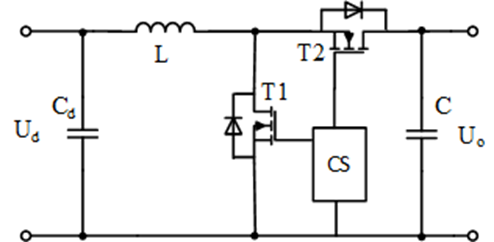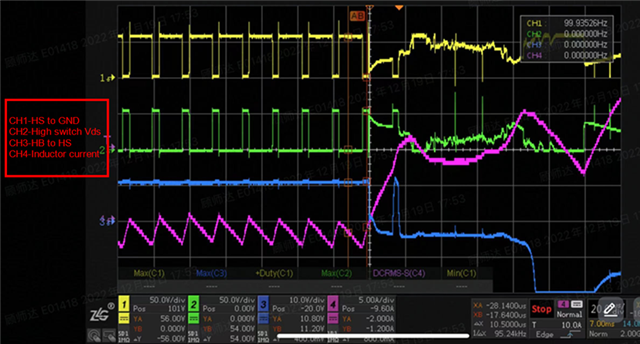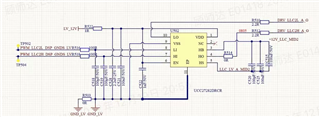Hi expert,
My customer is using UCC27282QDRCRQ1 first time and it is for a 300W Sync boost, the two MOSFET are CSD19502.
PWM switching frequency: 60KHz
Duty cycle: 20%(the main switch turn on for 20% time)

They increased the input voltage with no load, when the input voltage reaches 55V. UCC27282 will always broke after the Boost sync switch (T2) turned-on for a short time, along with the sync switch(T2) broken. It can see the boot scrap capacitor voltage go low quickly. And can see clearly HS have electric fire and then broken. As below picture.


And they also monitor that when the main switch is turned on, the PWM for the high switch (sync switch) can monitor a high negative voltage, which is about -12.7V (HO to HS). However, this is happened when the circuit is working normally, they just want to check whether there is risk when there is so great negative voltage from HO to HS.

The broken issue is very strange and damage many experiment boards of customer, could you kindly point the issue root cause?
BR
Emma



